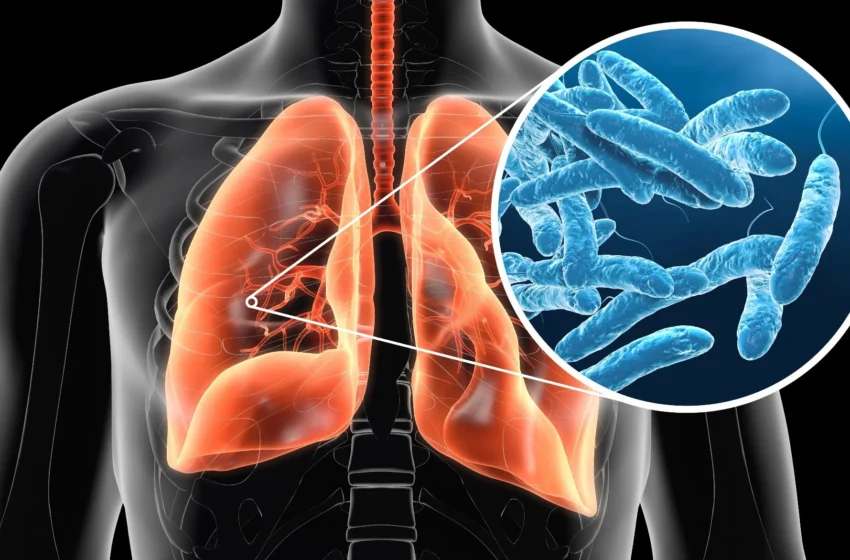Legionnaires’ disease outbreak: What to know about precautions and symptoms

Legionnaire Disease. Picture: Axel_Kock / Shutterstock
A growing outbreak of Legionnaires’ disease in Harlem, New York City has raised public health concerns as two deaths and at least 58 cases were confirmed by the NYC Department of Health. The situation, which began in July, marks one of the most significant clusters in the city in recent years.
With concerns over airborne transmission, the NYC Health Department has issued urgent safety advisories to residents, particularly those living or working in Upper Manhattan. As investigations continue, public health officials emphasize the importance of recognizing early symptoms and understanding how to minimize risk.
What Is Legionnaires’ Disease?
Legionnaires’ disease is a severe form of pneumonia caused by the Legionella bacteria. It spreads when people inhale small water droplets that contain the bacteria, often from cooling towers, air conditioning systems, hot tubs, or plumbing in large buildings. It does not spread from person to person.
The illness can be deadly, especially for older adults, smokers, and individuals with weakened immune systems. According to the Centers for Disease Control and Prevention (CDC), about 1 in 10 cases can be fatal.
Harlem Cluster: What We Know So Far
The outbreak has been localized in Harlem, with most cases linked to the area between 145th Street and 165th Street, according to health officials. The first cases emerged in mid-July, and city health inspectors have since tested water systems in nearby buildings to trace the possible source of the bacteria.
As of August 5, two people have died, and more than 50 others are recovering. The Health Department has confirmed that multiple cooling towers in the area tested positive for high levels of Legionella bacteria, though a single source has not yet been confirmed.
Symptoms: When to Seek Medical Attention
Early symptoms of Legionnaires’ disease may resemble the flu or COVID-19, making it easy to overlook in its early stages. Key warning signs include:
- Persistent cough
- Shortness of breath
- Fever over 100.4°F (38°C)
- Muscle aches
- Headaches
- Gastrointestinal symptoms (in some cases)
Symptoms typically appear 2–10 days after exposure to the bacteria. Health experts urge individuals experiencing these symptoms, especially those living in affected areas, to seek immediate medical care.
Who’s at Risk?
Certain groups are more vulnerable to Legionnaires’ disease, including:
- People over 50 years old
- Smokers or individuals with a history of smoking
- Those with chronic lung diseases
- Individuals with compromised immune systems
- People with recent respiratory infections
While healthy individuals may recover quickly, those in high-risk groups may develop serious complications such as respiratory failure or organ damage.
READ ALSO
Tropical Storm Dexter Hurricane: Latest forecast and impact
What is Lyme disease? Inside Justin Timberlake’s diagnosis
Public Health Response and Safety Measures
The NYC Department of Health has increased monitoring of cooling systems and water towers in the Harlem area. Local building managers have been instructed to disinfect water systems and follow updated safety guidelines.
Health officials have also launched community outreach programs, urging residents to stay informed and not panic. According to city health commissioner Dr. Ashwin Vasan, “We are treating this outbreak with the highest level of urgency and transparency.”
How to Protect Yourself
Although rare, Legionnaires’ disease is preventable. Here are steps residents can take:
- Avoid exposure to aerosolized water sources, especially in public spaces with cooling towers
- Run your shower or faucet with hot water for several minutes if it hasn’t been used for a while
- Report any unusual smells or discoloration in water
- Keep humidifiers, fountains, and hot tubs clean and disinfected
The Harlem Legionnaires’ outbreak is a reminder of the hidden risks tied to aging infrastructure and water systems in urban environments. While the NYC Health Department continues to investigate and contain the outbreak, public awareness and prompt medical attention remain critical.
Residents are encouraged to follow updates from nyc.gov/health and speak with their healthcare providers if they experience any concerning symptoms.

